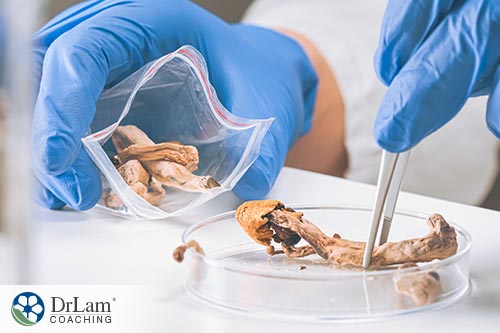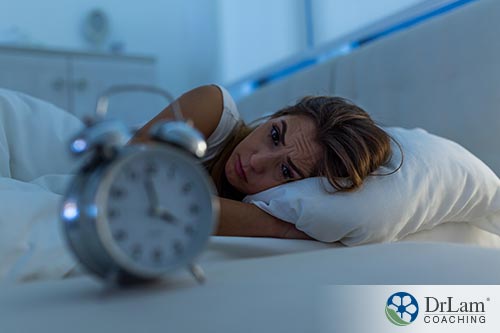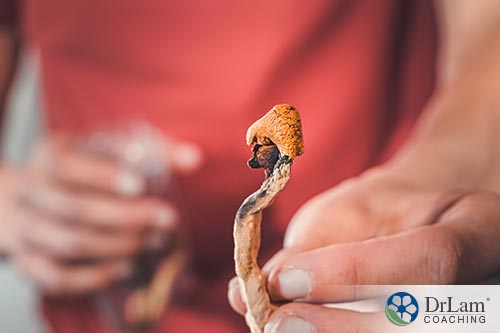 The last time you heard about hallucinogenic mushrooms, it may have been in the context of the psychedelic culture of the 1960s. Users claimed these mushrooms could expand your consciousness, make you more creative, and even show you the face of God. Yet while these claims are a bit outside the realm of modern medicine's interest in microdosing mushrooms, there are reports that this method may help many physical and psychological issues.
The last time you heard about hallucinogenic mushrooms, it may have been in the context of the psychedelic culture of the 1960s. Users claimed these mushrooms could expand your consciousness, make you more creative, and even show you the face of God. Yet while these claims are a bit outside the realm of modern medicine's interest in microdosing mushrooms, there are reports that this method may help many physical and psychological issues.
But does science back up the anecdotal reports of increased creativity and other benefits? Or could some other reason lie behind the proposed benefits of microdosing mushrooms? And could the negative results of this new trend outweigh the possible benefits?
This trendy term describes taking a small dose of one of several psychedelic drugs. Psilocybin mushrooms, along with LSD, make up the largest category of the drugs utilized.
At anywhere from 5-10% of the usual dose of drugs, microdosing doesn’t give the user the psychedelic effects of a normal dose. None of the hallucinations a typical dose would bring are present. But the effects do include increased creativity, a sharpening of the mind, and increased energy.
While a lack of scientific research makes microdosing mushrooms or other psychedelic substances experimental, this procedure could potentially become a viable intervention for some issues. As a result, the Food and Drug Administration gave approval for Phase 2B clinical trials of larger than microdose psilocybin for treatment-resistant depression.
General dosing guidelines call for taking a microdose every three days for a month. This gives you two days between doses. At the end of a month, the microdoses cease for a period of a few days. This seems to prevent psychological dependence on microdosing mushrooms.
In other words, keeping to such a protocol appears to give your body sufficient time to recover from possible lingering effects of microdosing. Although the limited research does not cover the effects of microdosing compared to placebo, anecdotal evidence suggests this format is effective for dealing with effects that may linger for a few days after the microdose.
As a result of the paucity of research findings, people have experimented with dosing on their own. The expectation of finding repeatable protocols to continue enhancing well-being drives this kind of experimentation.
With the two main psychedelic substances utilized in microdosing, consistency of the product remains a major issue. When microdosing mushrooms, this becomes an important obstacle to overcome.
To address the issue with botanicals of any kind, users will grind up the product in an effort to make the doses consistent. Doing this requires using the product in dried form. Once ground up, you can consume the powder or put it in capsules and swallow it.
If using LSD, you must consider the potency of this psychedelic. A small amount one way or the other can make a considerable difference in the result. In the past, LSD-laced blotter paper was used for taking this psychedelic. However, in microdosing trying to cut the very small pieces of paper into even smaller pieces proved difficult. The unevenness of distribution of LSD over the blotter paper led to uncertain amounts being ingested.
One way of addressing this issue involves dissolving a tab of LSD of known potency in a container of water or alcohol for several days in darkness. The darkness prevents the breakdown of the LSD. Then you can use a dropper with measures of volume to extract a microdose.
Most of the purported effects obtained from microdosing mushrooms come from anecdotal results from individual users. These results appear to cover a wide range of psychological domains. These anecdotal results include:
 Decreased stress
Decreased stressOne survey reported a significant number of respondents endorsed increased performance as their major motivation for microdosing.
Other non-scientific studies indicated microdosing mushrooms led to fewer negative emotions and dysfunctional attitudes. These make up some of the markers for depression and anxiety. One of these studies indicated participants reported improvement in both divergent and convergent thinking without an effect on overall fluid intelligence. Convergent thinking involves coming up with concrete solutions. On the other hand, divergent thinking describes the ability to come up with multiple ideas or solutions.
While there is still a lack of experimental results, it is possible that microdosing mushrooms could lead to these kinds of results.
Your body contains a built-in physical mechanism called the NeuroEndoMetabolic (NEM) Stress Response to help you deal with stress. Made up of six interrelated biological circuits containing three organ systems each, the NEM works to keep your body operating optimally. Each circuit plays a crucial role in dealing with stress when it hits your body.
The Neuroaffect circuit, consisting of the brain, autonomic nervous system (ANS), and the microbiome shows how your body affects your brain. These three organ systems work in conjunction with each other and likewise affect each other if one becomes dysfunctional.
Changes in your microbiome can lead to a lack of the necessary neurotransmitters in your brain. And this can increase the level of inflammation affecting your brain as well.
These kinds of changes also can lead to increased symptoms if you already suffer from Adrenal Fatigue Syndrome (AFS). Imbalance of bacteria in the microbiome results in poor absorption of nutrients from what you eat. This becomes another source of stress that negatively impacts your already weakened body.
One of the primary neurotransmitters in your brain that can be reduced by dysbiosis in your gut is serotonin. When serotonin is lacking, depression and anxiety increase.
In addition, stress leads to the activation of your ANS. Epinephrine and norepinephrine, two hormones/neurotransmitters in your brain, get released to help deal with increasing stress. Both of these substances tend to ‘gear up’ your body to deal with stress. Increased heart rate, sleeplessness, and an inability to wind down can result.
With the anecdotal evidence of microdosing indicating it can lead to stress reduction and potentially alleviate depression and anxiety, it can potentially provide some relief for those conditions if you suffer from AFS. However, because of the experimental nature of this procedure, you should exercise extreme caution in trying it. Only attempt microdosing under the guidance of an experienced practitioner.
As noted above, most of the information regarding this procedure comes from anecdotal reports from people experimenting on their own. In those cases, the validity of the results can come under significant criticism.
 However, some scientific research into microdosing can be found. One study followed the gold standard of research and conducted a double-blind experiment with LSD. In this case, neither the participants nor the researchers knew which group got which dose. The task involved time estimation. Results showed normal performance when the time elapsed stayed about 1600 microseconds but got worse when the time increased. Only minimal subjective drug effects were reported.
However, some scientific research into microdosing can be found. One study followed the gold standard of research and conducted a double-blind experiment with LSD. In this case, neither the participants nor the researchers knew which group got which dose. The task involved time estimation. Results showed normal performance when the time elapsed stayed about 1600 microseconds but got worse when the time increased. Only minimal subjective drug effects were reported.
Another study investigated the effects of microdoses of LSD as an alternative to Ritalin. Subjective reports from a large number of participants showed increases in positive moods, decreases in depression and negative moods, increased energy, improved health habits, and greater effectiveness at work.
Other smaller groups subjectively reported fewer symptoms of a number of conditions not associated before with psychedelic use. Some of these conditions included migraines, shingles, traumatic brain injury, and premenstrual syndrome.
The illegality of psilocybin makes research into its effects very difficult. However, some countries decriminalized it, and scientists in countries where it remains illegal can obtain permission to use it in research.
Part of the reason for research into its effects involves the potential for it to contain antidepressant and/or antianxiety effects. Therefore, it could lead to better medications for these conditions.
One study showed significant effects on convergent and divergent thinking. These findings support the anecdotal evidence reported in these same areas.
Some potential problems exist in much of the research into microdosing. In the research into the use of psilocybin mentioned above, no control group participated in the study. Therefore, some other factor than the psilocybin may account for the significant results.
In the study measuring the effectiveness of microdosing compared to Ritalin, the use of self-reports severely limited the validity of the results. Self-reporting can suffer from a desire to report positive results to meet the expectations of the researcher and to keep the reporter from being considered odd or out of step in some way. In addition, a daily evaluation plus a report could prove onerous for some individuals, resulting in haphazard reporting.
Primarily, psychedelics target the serotonin 2A receptors. These receptors exist in nearly every area of the central nervous system. They respond when serotonin or a psychedelic bind to them.
Serotonin affects a multitude of physiological systems including mood and stress response, two of the systems affected by AFS. A drop in serotonin is linked to several psychiatric conditions. These include depression, schizophrenia, sleeplessness, and anorexia. Other conditions affected include Alzheimer’s and Parkinson’s.
Another possible way microdosing works involves its anti-inflammatory effects, potentially reducing the inflammation involved in many illnesses, including those affecting the brain. At this point, research into this possibility continues.
On the other hand, the placebo effect must always be considered. Some people may experience beneficial results from microdosing mushrooms because they believe they will. Potentially, a release of endorphins or other biochemicals occurs when people ingest something they believe will benefit them, leading to the expected benefit.
In addition, the changes in sensory perception and conscious awareness, while subtle, can still impact a person’s experience, leading them to believe some benefit occurs.
However, even if the benefits of microdosing occur only psychologically, this still may improve a person’s wellbeing and activate healing and motivation in a person’s psyche.
The limited research findings in this area lead to significant concerns about safety.
With essentially no well-documented protocol to follow regarding the use of microdoses, the variability of doses may lead to unwanted effects.
Pre-existing mental health conditions may also bring about negative results.
Adverse cardiovascular results may come with this procedure. Overstimulation, increased anxiety, and sleeplessness have also been reported.
The narrow dose range may also lead to accidental overdoses.
The stigma and risk associated with the use of illegal substances also play a role in safety issues.
 Anecdotal evidence suggests there are some benefits resulting from this novel procedure. Increased performance, added creativity, and more energy make up the most frequently reported benefits. However, a lack of research also suggests extreme caution should be exercised.
Anecdotal evidence suggests there are some benefits resulting from this novel procedure. Increased performance, added creativity, and more energy make up the most frequently reported benefits. However, a lack of research also suggests extreme caution should be exercised.
Dosage guidelines indicate no more than 5-10% of normal doses of psychedelics should be used in microdosing. Microdosing mushrooms or LSD are the most used substances.
There appears to be some potential for benefit for those suffering from AFS with this procedure. However, it may also bring negative results in the form of overstimulation and increased anxiety. Extreme caution should be exercised.
If you want to try microdosing mushrooms, keep in mind that this procedure is experimental and should only be attempted under the guidance of an experienced practitioner. If you suffer from AFS, use caution because overstimulation can occur. This would significantly increase your AFS symptoms.
Whatever course of action you choose to take, however, please do so with the guidance of your healthcare professional. They will help you understand the options and risks of your choices.
If you would like to know more about or need assistance with microdosing mushrooms, the team at Dr. Lam Coaching can help. We offer a free** no-obligation phone consultation at +1 (626) 571-1234 where we will privately discuss your symptoms and various options. You can also send us a question through our Ask The Doctor system by clicking here.
Microdosing mushrooms involves taking a small dose, only 5-10%, of the dosage of psilocybin required for psychedelic effects. This can lead to increased productivity, more creativity, and greater energy among other benefits. The microdoses appear to bind to serotonin receptors found in most parts of the central nervous system.
